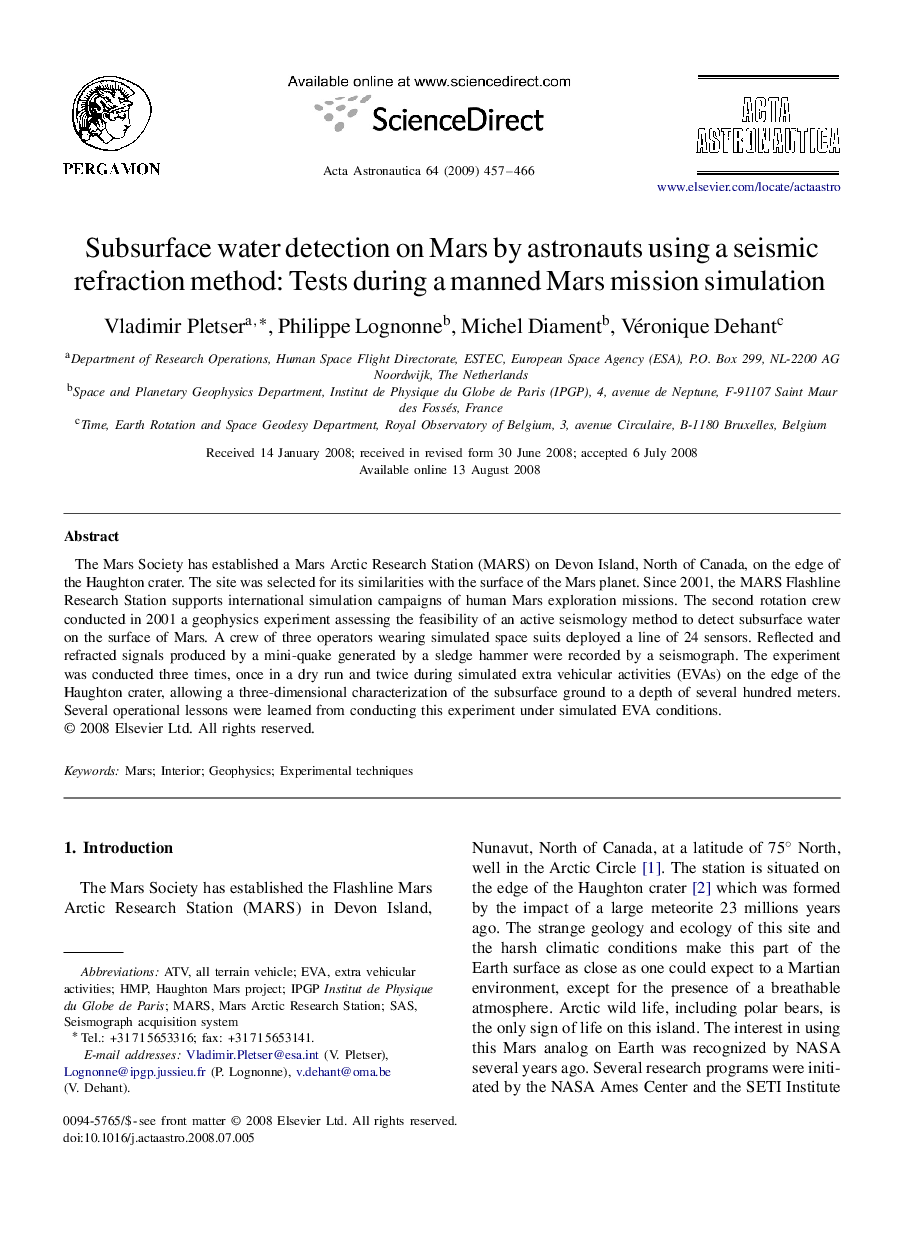| Article ID | Journal | Published Year | Pages | File Type |
|---|---|---|---|---|
| 1716713 | Acta Astronautica | 2009 | 10 Pages |
Abstract
The Mars Society has established a Mars Arctic Research Station (MARS) on Devon Island, North of Canada, on the edge of the Haughton crater. The site was selected for its similarities with the surface of the Mars planet. Since 2001, the MARS Flashline Research Station supports international simulation campaigns of human Mars exploration missions. The second rotation crew conducted in 2001 a geophysics experiment assessing the feasibility of an active seismology method to detect subsurface water on the surface of Mars. A crew of three operators wearing simulated space suits deployed a line of 24 sensors. Reflected and refracted signals produced by a mini-quake generated by a sledge hammer were recorded by a seismograph. The experiment was conducted three times, once in a dry run and twice during simulated extra vehicular activities (EVAs) on the edge of the Haughton crater, allowing a three-dimensional characterization of the subsurface ground to a depth of several hundred meters. Several operational lessons were learned from conducting this experiment under simulated EVA conditions.
Related Topics
Physical Sciences and Engineering
Engineering
Aerospace Engineering
Authors
Vladimir Pletser, Philippe Lognonne, Michel Diament, Véronique Dehant,
